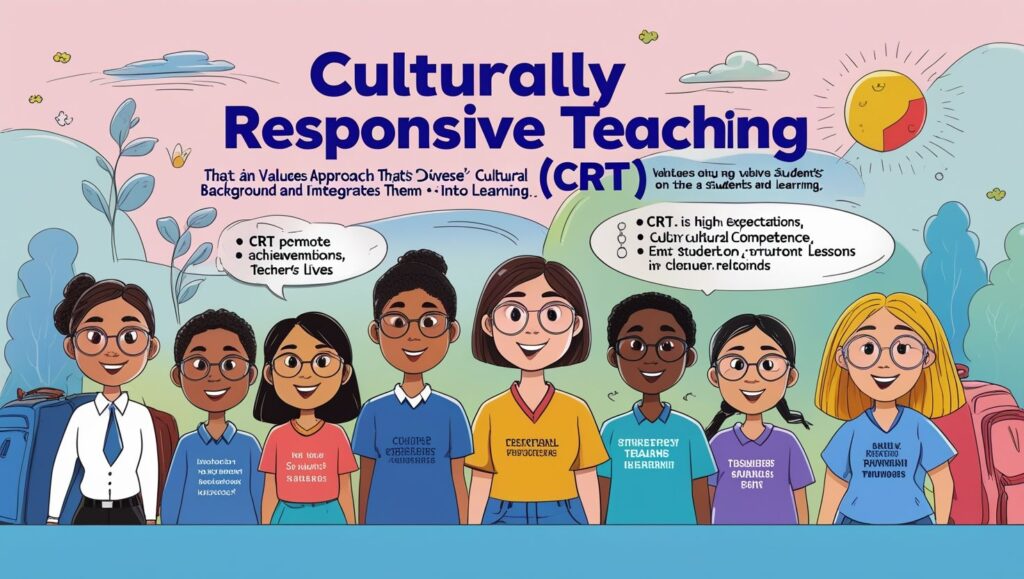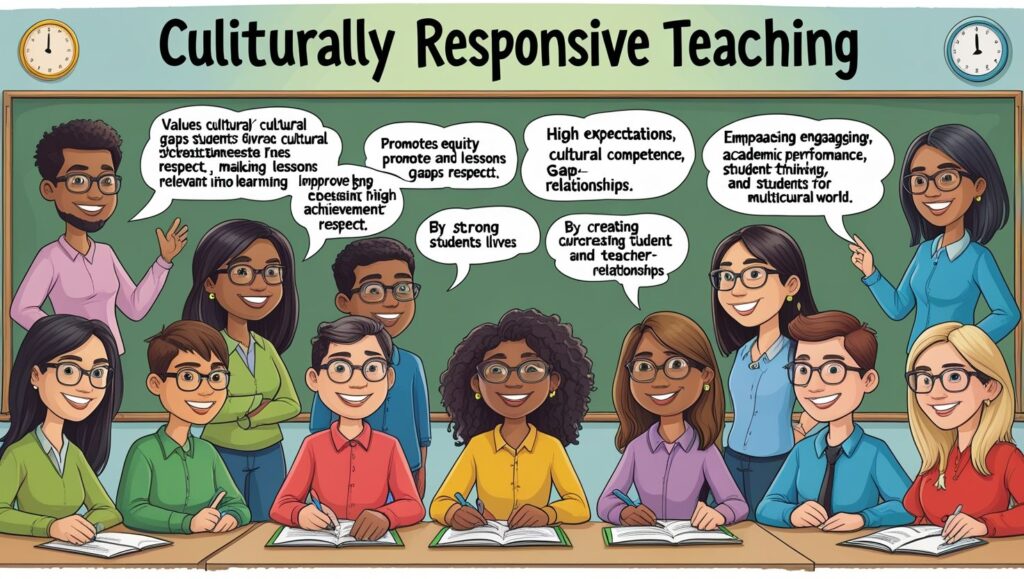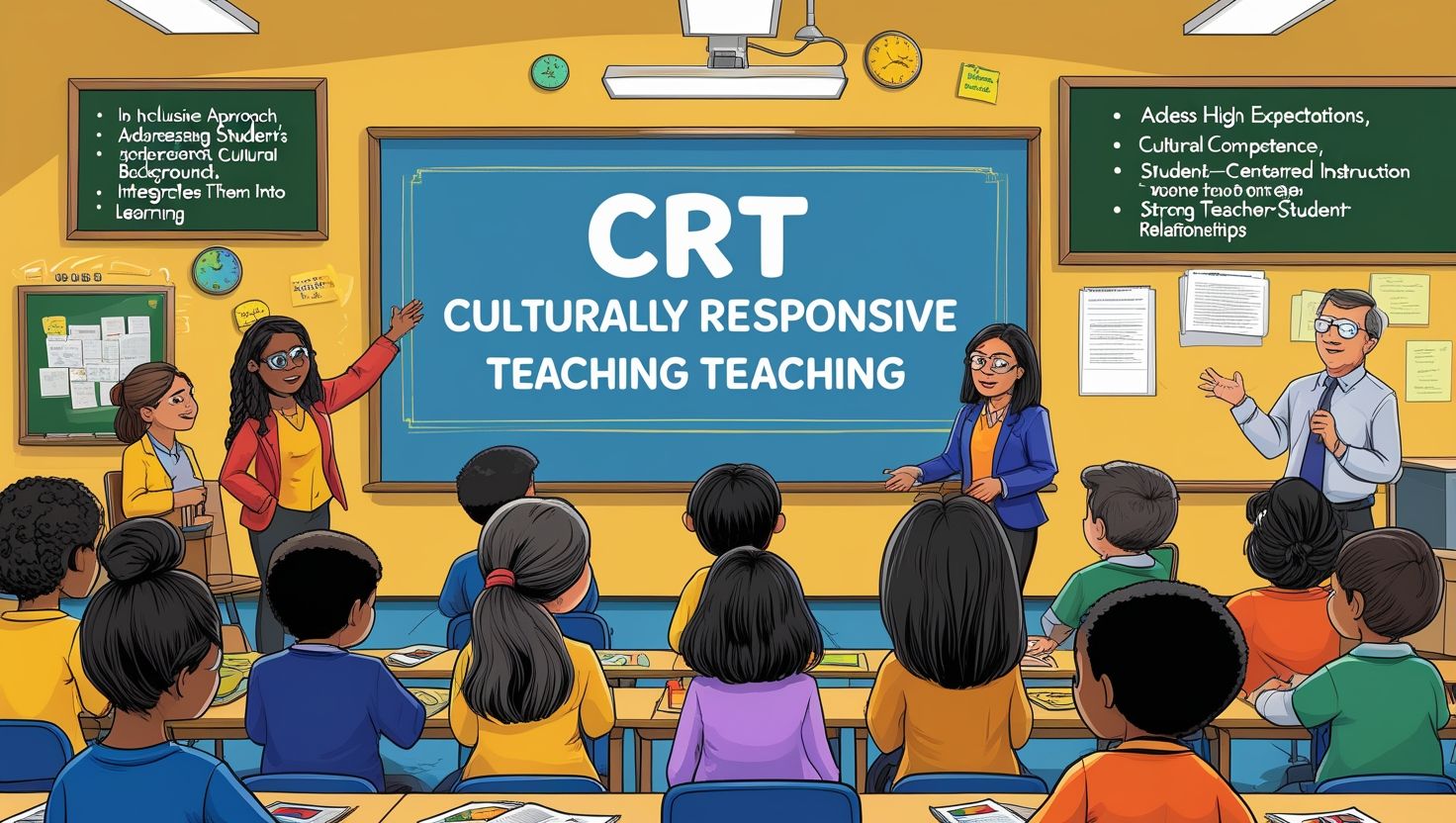Introduction
In today’s increasingly diverse educational landscape, Culturally Responsive Teaching (CRT) has become a vital approach for creating inclusive, equitable, and engaging classrooms. Unlike traditional teaching models that often center on a single cultural perspective, CRT intentionally recognizes and values the rich cultural backgrounds students bring into the classroom. It goes beyond merely acknowledging diversity; it actively integrates students’ cultural references, lived experiences, and worldviews into the learning process. In doing so, it transforms classrooms into spaces where all learners feel respected, represented, and empowered.
This article explores the significance of culturally responsive teaching, its core principles, the benefits it provides, the challenges teachers often face, and practical strategies educators can use to bring CRT into their daily practice.
The Significance of Culturally Responsive Teaching
Culturally responsive teaching is not just an educational trend; it is a framework rooted in equity, inclusivity, and respect. In a world where schools increasingly reflect multicultural societies, teaching practices that ignore or minimize cultural diversity risk alienating students and reinforcing inequalities. CRT addresses this concern directly by leveraging diversity as an asset rather than treating it as a challenge.
1. Addressing Achievement Gaps
One of the most critical goals of CRT is closing persistent achievement gaps between students of different cultural, linguistic, or socioeconomic backgrounds. Traditional teaching methods may unconsciously favor dominant cultural norms, leaving some students feeling marginalized. By incorporating culturally relevant materials, acknowledging different learning styles, and addressing cultural biases, CRT helps create conditions where all students can thrive academically.
2. Fostering Inclusivity
Inclusivity goes beyond access; it means that every student feels seen and respected in the classroom. A culturally responsive teacher works to foster a sense of belonging by ensuring that students’ voices and cultural identities are represented in lessons and discussions. This inclusivity builds classroom cohesion and encourages collaboration across cultural lines.

3. Enhancing Engagement
Students are more engaged when they see their culture reflected in what they learn. Whether it’s through literature, examples in science, or historical perspectives, connecting lessons to students’ cultural experiences makes learning meaningful. When lessons resonate personally, students are more motivated, enthusiastic, and invested in their education.
Core Principles of Culturally Responsive Teaching
CRT is grounded in several guiding principles that shape its practice. These principles serve as a framework for teachers who wish to build more inclusive and responsive classrooms.
1. High Expectations for All Students
Culturally responsive teaching is built on the conviction that all students are capable of academic excellence. Teachers must avoid deficit thinking—the belief that students from certain backgrounds are less capable—and instead provide the encouragement, rigor, and support necessary for every learner to succeed.
2. Cultural Competence
Teachers must cultivate cultural competence, which means not only appreciating cultural differences but also actively learning about the cultures represented in their classrooms. Cultural competence requires educators to reflect on their own cultural identities, biases, and assumptions while striving to better understand their students’ values, traditions, and communication styles.
3. Student-Centered Instruction
CRT shifts the focus from teacher-centered to student-centered learning. Students’ cultural knowledge, perspectives, and experiences become central to classroom instruction. For example, group discussions, storytelling, and problem-solving activities often draw on students’ backgrounds to create deeper engagement.
4. Culturally Relevant Curriculum
An effective culturally responsive curriculum incorporates diverse perspectives. This may include texts from authors of different backgrounds, historical accounts from multiple viewpoints, and examples from global cultures in science and mathematics. Representation helps students feel that their culture matters and broadens all students’ understanding of the world.
5. Building Strong Relationships
Trust and mutual respect between teachers and students form the heart of CRT. Teachers who show genuine care and interest in students’ cultural identities foster stronger relationships. This foundation of respect creates a supportive environment where students feel safe to share their perspectives and ideas.

Benefits of Culturally Responsive Teaching
When implemented effectively, culturally responsive teaching offers wide-ranging benefits for both students and teachers.
1. Improved Academic Performance
Research consistently shows that students are more successful when the curriculum and instruction reflect their backgrounds. CRT bridges the gap between home and school experiences, making academic content more accessible and relatable.
2. Enhanced Critical Thinking
CRT not only builds knowledge but also sharpens critical thinking skills. By encouraging students to analyze and compare cultural perspectives, they develop the ability to evaluate information from multiple viewpoints and understand the complexities of social issues.
3. Greater Cultural Awareness
A culturally responsive classroom introduces students to a variety of perspectives. This fosters cultural awareness and sensitivity, preparing students to navigate and contribute to multicultural societies with respect and empathy.
4. Reduced Behavioral Issues
Students who feel respected and understood are less likely to disengage or display negative behaviors. CRT promotes a positive classroom climate, reducing conflicts and encouraging cooperative learning.
5. Promoting Equity in Education
Perhaps the most important benefit of CRT is its role in advancing equity in education. By actively challenging biases, addressing systemic barriers, and ensuring fair opportunities, CRT helps build an education system where success is possible for every student.
Challenges of Culturally Responsive Teaching
Despite its benefits, CRT is not without challenges. Understanding these obstacles is the first step toward overcoming them.
1. Teacher Preparation
Many educators enter the classroom without formal training in CRT. Without professional development opportunities, teachers may struggle to integrate culturally responsive strategies effectively.
2. Curriculum Development
Creating a culturally relevant curriculum requires effort and resources. In some regions, schools lack access to diverse teaching materials, making it difficult for educators to fully represent their students’ cultures.
3. Balancing Diverse Needs
In classrooms with multiple cultural groups, addressing everyone’s needs equitably can be complex. Teachers must carefully design lessons that balance representation without favoring or excluding certain groups.
4. Overcoming Bias
Teachers must continuously reflect on and address their own implicit biases and stereotypes. This process requires humility, self-awareness, and a willingness to challenge deeply ingrained assumptions.
5. Institutional Support
CRT is most effective when supported by school leadership and policies. Without institutional commitment, individual teachers may face barriers such as rigid curricula, limited time, or lack of resources.

Practical Strategies for Implementing Culturally Responsive Teaching
While the challenges are real, educators can take practical steps to bring CRT into their classrooms.
- Know Your Students: Learn about students’ cultural backgrounds, languages, family traditions, and interests. Family surveys, cultural projects, and classroom discussions can provide valuable insights.
- Reflect on Your Practices: Regularly examine your teaching for unintentional biases. Peer feedback, journaling, or student input can help identify areas for growth.
- Integrate Diverse Perspectives: Use books, case studies, examples, and media that represent multiple cultural viewpoints. Rotate perspectives so that no culture dominates.
- Create an Inclusive Environment: Encourage open dialogue about cultural differences. Establish classroom norms that emphasize respect and listening.
- Use Culturally Relevant Pedagogy: Adopt interactive strategies such as collaborative learning, storytelling, project-based learning, and experiential activities that align with students’ cultural communication styles.
- Build Strong Relationships: Show consistent interest in students’ lives. Celebrate cultural holidays, traditions, or languages in the classroom to affirm students’ identities.
- Seek Professional Development: Attend workshops, webinars, or training sessions on CRT. Collaboration with colleagues can also provide fresh perspectives and ideas.
Conclusion
Culturally Responsive Teaching is more than a strategy; it is a philosophy that transforms education into a practice of equity, respect, and empowerment. By valuing the cultural identities of all students, educators create learning environments where diversity is celebrated, engagement is heightened, and academic success is attainable for everyone.
Though challenges exist—such as limited resources, biases, and lack of training—the benefits of CRT far outweigh the difficulties. It improves academic performance, builds critical thinking, fosters inclusivity, and prepares students to live in and contribute to a multicultural world.
For teachers, adopting CRT means embracing a journey of self-reflection, lifelong learning, and intentional practice. With commitment and institutional support, culturally responsive teaching has the power to reshape education into a system where every learner, regardless of background, has the opportunity to thrive.

j4bkbn
jk0bua
fx93fh
Have you ever considered creating an e-book or guest authoring on other websites? I have a blog based upon on the same information you discuss and would love to have you share some stories/information. I know my viewers would enjoy your work. If you’re even remotely interested, feel free to shoot me an e-mail.
unljqj
I have learn several good stuff here. Certainly value bookmarking for revisiting. I surprise how much effort you put to create this sort of excellent informative site.
Hiya, I’m really glad I’ve found this info. Today bloggers publish just about gossips and net and this is really annoying. A good web site with exciting content, this is what I need. Thank you for keeping this web site, I’ll be visiting it. Do you do newsletters? Can’t find it.
Very interesting points you have remarked, thanks for putting up.
Very interesting subject , appreciate it for putting up.
Nice post. I learn something more challenging on different blogs everyday. It will always be stimulating to read content from other writers and practice a little something from their store. I’d prefer to use some with the content on my blog whether you don’t mind. Natually I’ll give you a link on your web blog. Thanks for sharing.
I have learn several good stuff here. Definitely price bookmarking for revisiting. I wonder how so much effort you set to create one of these great informative site.
xpyhax
I have recently started a blog, the information you provide on this site has helped me tremendously. Thanks for all of your time & work.
Good info. Lucky me I reach on your website by accident, I bookmarked it.
I am pleased that I discovered this site, exactly the right info that I was looking for! .